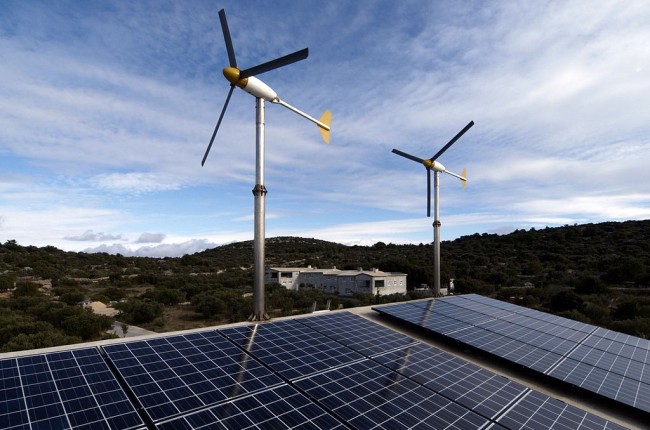
Investment in renewable energy dips globally as cost of wind, solar improve
by Frank Jordans, The Associated Press

Lower costs are a mixed blessing for the renewable industry, which delivered more energy capacity last year, but received less overall investment

The falling cost of wind and solar power has made renewable energy cheaper, but it has also translating to less overall investment. PHOTO: Nenad Kajić, via Wikimedia Commons
BERLIN—Global investments in renewable energy fell by almost a quarter in 2016 amid a drop in prices and lower spending in some markets, according to a U.N.-backed report published April 6.
Overall investments reached US$241.6 billion last year, down from $312.2 billion in 2015, said the United Nations Environment Program.
But investors got more bang for their buck: renewable energy capacity grew increased by 138.5 gigawatts, 8 per cent more than the 127.5 gigawatts added the year before.
That’s because installing solar, wind and other systems for generating renewable energy became cheaper last year.
China invested $78.3 billion, about a third less than the previous year—the first drop in over a decade.
U.S. investment dipped by 10 per cent, to $46.4 billion, as developers paced their projects to take advantage of tax credits. Japan’s investment more than halved to $14.4 billion last year.
In Europe, spending on renewables increased slightly to $59.8 billion, driven by big wind power projects in Britain and Germany.
India saw the completion of a massive solar project in Tamil Nadu state in 2016. It will be the world’s biggest until China finishes expanding the Longyangxia Dam photovoltaic complex later this year.
Many countries see renewable energy as an essential part of international efforts to reduce carbon emissions that contribute to global warming.
Investment in power generated from fossil fuels was roughly half that of renewables last year, according to the report , which is based on data from Bloomberg New Energy Finance.
The proportion of electricity coming from renewable sources, not including large hydropower plants, rose from 10.3 per cent to 11.3 per cent in 2016.
The European electricity industry association EURELECTRIC announced Tuesday its 3,500 members won’t invest in new coal-fired power plants after 2020.